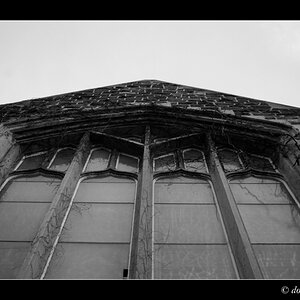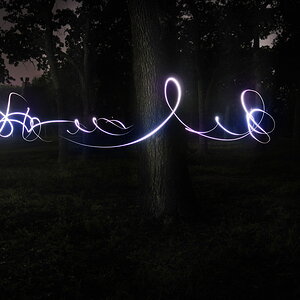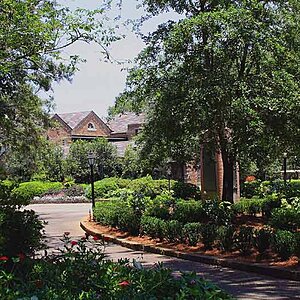Navigation
Install the app
How to install the app on iOS
Follow along with the video below to see how to install our site as a web app on your home screen.

Note: This feature currently requires accessing the site using the built-in Safari browser.
More options
You are using an out of date browser. It may not display this or other websites correctly.
You should upgrade or use an alternative browser.
You should upgrade or use an alternative browser.
Trouble understanding lenses
- Thread starter Taylorl813
- Start date
Derrel
Mr. Rain Cloud
- Joined
- Jul 23, 2009
- Messages
- 48,225
- Reaction score
- 18,941
- Location
- USA
- Website
- www.pbase.com
- Can others edit my Photos
- Photos OK to edit
There were PLENTY of references to "equivalents" during the film era; all one had to do was to look at reference manuals, such as the ones that Popular Photography produced for a few decades. Almost everybody who was a serious photographer knew that 35mm's "normal" lens was a 50mm, while 6x6 cm square (120 rollfilm) used a 75mm or 80mm as its "normal" lens. During the film era, hundreds of thousands of serious photographers knew and understood that a "normal lens" was one that was roughly the diagonal of the film size being captured to. And they knew too that that was only a rough guide, and not "set in stone".
There existed _MANY DOZENS_ of 35mm,120 rollfilm, and 4x5 inch sheet film equivalence charts. To name just three common sources of equivalence charts: Popular Photography,Modern Photography, and Kodak had multiple publications that codified what film format and what lens gave wide-angle,normal,telephoto,and long telephoto effects. Multiple books contained this information as well, as well as catalogs from common, large vendors, like Calumet Photographic, as well as lens makers for large format lenses.
The idea that there never existed "equivalence" charts or articles or tables in terms of multiple film formats is utter revisionist history; I own multiple copies of photography information periodicals from the 1980's that list out MULTIPLE format sizes, and their equivalent angles of view...half-frame,35mm 24x36,6x6,6x7,6x9,6x17cm, 2.25x3.25 inch, 4x5 inch, etc.
If one tries to say that the idea of film equivalent angles of view and focal lengths was never codified, one is full of fixer...because it was _common knowledge_ for decades. Here on TPF I've seen the idea put forth that equivalent angles of view charts and information "never existed", and have held my tongue on this subject for a few years now; I finally had to say something, which is that the claim this idea never existed is utter B.S.. I'm tired of reading nonsense about this, and am finally taking the time to type out a reply. Hundred of thousands of film-era photographers knew and understood the idea of film format affecting lens focal length and angles of view.
There existed _MANY DOZENS_ of 35mm,120 rollfilm, and 4x5 inch sheet film equivalence charts. To name just three common sources of equivalence charts: Popular Photography,Modern Photography, and Kodak had multiple publications that codified what film format and what lens gave wide-angle,normal,telephoto,and long telephoto effects. Multiple books contained this information as well, as well as catalogs from common, large vendors, like Calumet Photographic, as well as lens makers for large format lenses.
The idea that there never existed "equivalence" charts or articles or tables in terms of multiple film formats is utter revisionist history; I own multiple copies of photography information periodicals from the 1980's that list out MULTIPLE format sizes, and their equivalent angles of view...half-frame,35mm 24x36,6x6,6x7,6x9,6x17cm, 2.25x3.25 inch, 4x5 inch, etc.
If one tries to say that the idea of film equivalent angles of view and focal lengths was never codified, one is full of fixer...because it was _common knowledge_ for decades. Here on TPF I've seen the idea put forth that equivalent angles of view charts and information "never existed", and have held my tongue on this subject for a few years now; I finally had to say something, which is that the claim this idea never existed is utter B.S.. I'm tired of reading nonsense about this, and am finally taking the time to type out a reply. Hundred of thousands of film-era photographers knew and understood the idea of film format affecting lens focal length and angles of view.
Derrel
Mr. Rain Cloud
- Joined
- Jul 23, 2009
- Messages
- 48,225
- Reaction score
- 18,941
- Location
- USA
- Website
- www.pbase.com
- Can others edit my Photos
- Photos OK to edit
Reference materials were invented long before digital photography.
https://www.amazon.com/s/ref=nb_sb_noss_2?url=search-alias=stripbooks&field-keywords=Kodak+master+Photoguide
https://www.amazon.com/Photographic-Principles-Practices-Harry-Asher/dp/B0026S6IHS
https://www.amazon.com/Amateur-Photographers-Handbook-Aaron-Sussman/dp/0690057822
https://www.amazon.com/s/ref=nb_sb_noss_2?url=search-alias=stripbooks&field-keywords=Kodak+master+Photoguide
https://www.amazon.com/Photographic-Principles-Practices-Harry-Asher/dp/B0026S6IHS
https://www.amazon.com/Amateur-Photographers-Handbook-Aaron-Sussman/dp/0690057822
As an Amazon Associate we earn from qualifying purchases.
ceemac
No longer a newbie, moving up!
- Joined
- Oct 8, 2017
- Messages
- 473
- Reaction score
- 226
- Location
- Cariboo, B.C.
- Can others edit my Photos
- Photos OK to edit
In a nutshell If you took a pi with a 50mm lens on a full frame camera, putting the same 50mm lens on an APS-C it would be cropped. No change in zoom. Forget crop factor. What you see is what you get.
- Joined
- Mar 8, 2011
- Messages
- 25,160
- Reaction score
- 9,010
- Location
- Iowa
- Website
- pixels.com
- Can others edit my Photos
- Photos NOT OK to edit
There were PLENTY of references to "equivalents" during the film era; all one had to do was to look at reference manuals, such as the ones that Popular Photography produced for a few decades. Almost everybody who was a serious photographer knew that 35mm's "normal" lens was a 50mm, while 6x6 cm square (120 rollfilm) used a 75mm or 80mm as its "normal" lens. During the film era, hundreds of thousands of serious photographers knew and understood that a "normal lens" was one that was roughly the diagonal of the film size being captured to. And they knew too that that was only a rough guide, and not "set in stone".
There existed _MANY DOZENS_ of 35mm,120 rollfilm, and 4x5 inch sheet film equivalence charts. To name just three common sources of equivalence charts: Popular Photography,Modern Photography, and Kodak had multiple publications that codified what film format and what lens gave wide-angle,normal,telephoto,and long telephoto effects. Multiple books contained this information as well, as well as catalogs from common, large vendors, like Calumet Photographic, as well as lens makers for large format lenses.
The idea that there never existed "equivalence" charts or articles or tables in terms of multiple film formats is utter revisionist history; I own multiple copies of photography information periodicals from the 1980's that list out MULTIPLE format sizes, and their equivalent angles of view...half-frame,35mm 24x36,6x6,6x7,6x9,6x17cm, 2.25x3.25 inch, 4x5 inch, etc.
If one tries to say that the idea of film equivalent angles of view and focal lengths was never codified, one is full of fixer...because it was _common knowledge_ for decades. Here on TPF I've seen the idea put forth that equivalent angles of view charts and information "never existed", and have held my tongue on this subject for a few years now; I finally had to say something, which is that the claim this idea never existed is utter B.S.. I'm tired of reading nonsense about this, and am finally taking the time to type out a reply. Hundred of thousands of film-era photographers knew and understood the idea of film format affecting lens focal length and angles of view.
But did any of those books/charts/etc have the equivelant of 'crop factor' numbers? i.e., "To convert 6x7 to 35mm, multiply/divide by x"?
ac12
Been spending a lot of time on here!
- Joined
- Dec 5, 2017
- Messages
- 2,637
- Reaction score
- 911
- Location
- SF Bay Area, California, USA
- Can others edit my Photos
- Photos NOT OK to edit
Thanks for the links Derrel.
I am going to see if I can't find one of them in the local library.
I am going to see if I can't find one of them in the local library.
Solarflare
No longer a newbie, moving up!
- Joined
- May 24, 2012
- Messages
- 2,898
- Reaction score
- 395
Err ... I have never used 35mm film and I understand full frame equivalence just fine.At the cost of confusion for the many who have never used 35mm film.
Well technically I might have used 35mm film but back then I was completely clueless about photography. Wasnt interested in in before they introduced digital.
Also I dont get your point. You're saying it requires effort to communicate. Why ... yes ?
Designer
Been spending a lot of time on here!
- Joined
- Apr 13, 2012
- Messages
- 18,505
- Reaction score
- 4,853
- Location
- Iowa
- Can others edit my Photos
- Photos OK to edit
I don't recall ever seeing anything like that, probably for the simple reason that we seldom swapped lenses between different format cameras.But did any of those books/charts/etc have the equivelant of 'crop factor' numbers? i.e., "To convert 6x7 to 35mm, multiply/divide by x"?
I do remember that 50mm was considered "normal", and that my 4x5 camera needed a longer lens for a "normal" angle of view.
greybeard
Been spending a lot of time on here!
- Joined
- Dec 30, 2011
- Messages
- 4,508
- Reaction score
- 1,838
- Location
- WV
- Can others edit my Photos
- Photos OK to edit
The 4x5 I had back in the day used a 150mm as a normal lensI don't recall ever seeing anything like that, probably for the simple reason that we seldom swapped lenses between different format cameras.But did any of those books/charts/etc have the equivelant of 'crop factor' numbers? i.e., "To convert 6x7 to 35mm, multiply/divide by x"?
I do remember that 50mm was considered "normal", and that my 4x5 camera needed a longer lens for a "normal" angle of view.
ac12
Been spending a lot of time on here!
- Joined
- Dec 5, 2017
- Messages
- 2,637
- Reaction score
- 911
- Location
- SF Bay Area, California, USA
- Can others edit my Photos
- Photos NOT OK to edit
Err ... I have never used 35mm film and I understand full frame equivalence just fine.At the cost of confusion for the many who have never used 35mm film.
Well technically I might have used 35mm film but back then I was completely clueless about photography. Wasnt interested in in before they introduced digital.
Also I dont get your point. You're saying it requires effort to communicate. Why ... yes ?
Try discussing "full frame equivalent" with a teen or adult, who has never used 35mm film or full frame cameras.
They come from phone cameras, maybe to digital P&S, then to APS-C sensor cameras. And most will never go to FF.
In the US, you might as well be talking metric (kilometers per hour, grams, meters, etc) to them, because 'full frame' is a reference that they do not understand and cannot relate to.
Yes, if you are a half serious photographer, you may put in the time and effort to understand 'full frame equivalent' and crop factor conversion math, even though you do not use a FF camera.
Last edited:
EJA64
TPF Noob!
- Joined
- Apr 28, 2017
- Messages
- 25
- Reaction score
- 4
- Can others edit my Photos
- Photos NOT OK to edit
In film arenas, few people try to put 35mm format lenses on 6x7cm format cameras, 6.45cm format lenses on 6x6cm cameras, or such. If you have experience of one format, and want an approximate idea of what size lens you need to get in a less familiar format to get a roughly equivalent image to that of a more familiar lens in a more familiar format, you can dig up guides. If you are familiar with a 6x7cm format system, and want to get an idea of what 35mm format lens will approximate which 6x7cm format lens, you can divide the 6x7cm lens by 2. So a 120mm lens in the 6x7cm format will be roughly similar to a 60mm lens in a 35mm format system. If you have experience with a 6x7cm film system, and are thinking of moving to a 35mm film format system, the "divide by 2" rule gives you some idea of which 35mm format lenses to buy to get images from your new system which are roughly similar to images form your old system. Other than being in such a situation, you probably will have no need for such comparisons, which is why they are not common subjects in most photo related books / videos. If you have a full frame camera, a 50mm lens is a 50mm lens. If you put a 50mm lens on a DX camera, the filed of view will be equivalent to that produce by what a 75mm lens would produce on a FF camera. Other than giving you some idea of what sort of image a lens will provide, the FF / Crop Frame talk is meaningless. The main element in the discussion is the field of view difference, and thus the composition involved. At the same distance from a model, one lens will show a knees to crown image, while the other will show a waist to crown image. If you want the same composition, just move closer to, or further away from, the model. Another aspect is lens quality. FF lenses tend to be designed, ground, etc, to higher standards than most Crop Frame lenses. So, a FF lens will probably provide greater detail than will a CF lens. DXO Mark's "Perceptual Megapixels" rating can guide somewhat in this regard.
Solarflare
No longer a newbie, moving up!
- Joined
- May 24, 2012
- Messages
- 2,898
- Reaction score
- 395
The 4x5 I had back in the day used a 150mm as a normal lens
Yes.
And very surprisingly, a 150mm is considered a normal lens on 4x5 camera even to this day.
But whats your point ?
mrca
No longer a newbie, moving up!
- Joined
- Mar 13, 2018
- Messages
- 872
- Reaction score
- 280
- Can others edit my Photos
- Photos NOT OK to edit
Sparky, because I shoot MF 6x7 (RB 67) but my head is in FF/35mm, I have a conversion chart but don't know of a conversion number. Just divided it out and it is about .48 so a 180 mm mf has a 35 equivalent of 87 mm. 250 is 118. 65 is 32 according to the chart.
Similar threads
- Replies
- 5
- Views
- 633
- Replies
- 9
- Views
- 228
- Replies
- 18
- Views
- 1K
- Replies
- 10
- Views
- 3K






![[No title]](/data/xfmg/thumbnail/32/32158-8de1a90710a58144b47a0cee83a6c820.jpg?1619735234)
![[No title]](/data/xfmg/thumbnail/32/32156-d6cfe2865ceed861a0633752a006ea20.jpg?1619735234)




